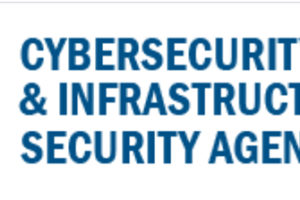North Korean Malicious Cyber Activity


Organisation Types for membership



The International Telecommunication Union (ITU) has published Connecting Humanity - Assessing investment needs of connecting humanity to the Internet by 2030, a comprehensive new study that estimates the investment needed to achieve universal, affordable broadband connectivity for all humanity by the end of this decade.
Connecting Humanity posits that nearly US$ 428 billion is required to connect the remaining 3 billion people aged ten years and above to broadband Internet by 2030. It is an ambitious goal and a major infrastructure investment challenge.
"Meeting the investment necessary to bring every person online by the end of this decade will require an unprecedented and concerted effort from the public and private sectors," said ITU Secretary-General Houlin Zhao. "The new Connecting Humanity study led by ITU is the much-needed roadmap that will guide decision-makers on the journey towards accessible, affordable, reliable, and safe digital technologies and services for all."
The study examines costs associated with infrastructure needs, enabling policy and regulatory frameworks, and basic digital skills and local content at both the global and regional levels, as well as how to mobilize the unprecedented levels of financing needed to extend networks to unserved communities.
Over the past several months, the COVID-19 pandemic has exposed different types of inequalities within and across countries and regions, including those related to quality of access, affordability and use of the Internet.
With so many essential services pushed online, there is a real and present danger that those without broadband Internet access could be left ever further behind. Hence assessing investment requirements to reach affordable universal connectivity is important to any country concerned with their ability to achieve the Sustainable Development Goals (SDGs).
According to ITU, over 12% of the global unconnected population live in remote, rural locations where traditional networks are not easily accessible, most of them in Africa and South Asia. This connectivity gap is exacerbated by the gender digital divide. Across the globe, more men than women use the Internet: only 48% of women as opposed to 58% of men.
Whereas in some regions bridging the connectivity gap predominantly means upgrading existing coverage and capacity sites, nearly half of the required radio access network (RAN) infrastructure investment in Sub-Saharan Africa, South Asia, and East Asia/Pacific will be greenfield, the new study says.
"While this is an ambitious aim, it is in no way an unachievable one," said Doreen Bogdan-Martin, Director of the ITU Telecommunication Development Bureau. "It is my hope that, as part of ITU's Connect 2030 Agenda efforts, this major new ITU assessment will provide clear, coherent evidence-based guidance for countries that will help accelerate efforts to reach unconnected communities, so that equality of opportunity is finally within reach of all."
Universal broadband access is the vital catalyst needed to drive global economic recovery and accelerate lacklustre progress towards the UN Sustainable Development Goals, according to a new report released by the UN Broadband Commission for Sustainable Development.
The COVID-19 pandemic has significantly underscored humanity's growing reliance on digital networks for business continuity, employment, education, commerce, banking, healthcare, and a whole host of other essential services. Yet today, almost half the global population has still never accessed the internet, and hundreds of millions more struggle with slow, costly and unreliable connections, often through remote locations like internet cafés.
The Broadband Commission for Sustainable Development's 2020 State of Broadband report, released at the Commission's 10th anniversary meeting earlier today, includes a rallying call to world leaders and heads of industry to place universal broadband connectivity at the very forefront of global recovery and sustainable development efforts.
The State of Broadband 2020: Tackling Digital Inequalities, A Decade for Action, highlights stark disparities in access to high-speed connectivity that have prevented billions of adults and children from benefiting from remote working, learning and communication. The report also takes stock of progress made in expanding access to and adoption of broadband infrastructure and services, and achieving the Commission's seven 2025 advocacy targets.
Paul Kagame, Co-Chair of the Broadband Commission and President of Rwanda said: "The first decade of the Broadband Commission has made a real impact by highlighting the transformational power of universal access to high-speed internet connectivity and smartphones. Ideas that seemed futuristic ten years ago, are now mainstream. The next decade will be about using digital tools to speed up the recovery from the Covid pandemic and make up some of the lost ground on the SDGs."
Carlos Slim Helú, President of the Carlos Slim Foundation and Co-Chair of the Broadband Commission, said: “Digital technologies are offering services that are creating big changes. Regulators and governments should be aware of the vital importance for society and development that telecom networks play, and that high taxes, spectrum charges and regulation are barriers to digital inclusion. Today our challenge is to look for universal connectivity and to make it available for countries and people. Broadband Connectivity is the bridge to move to economic development and welfare."
“Leaving no one behind means leaving no one offline, now more than ever before," said Houlin Zhao, Secretary-General of the International Telecommunication Union (ITU), the United Nations' specialized agency for information and communication technology (ICT), and Co-Vice Chair of the Commission. “Increasing and coordinating ICT infrastructure investments will be instrumental, not only in connecting the 3.6 billion people still offline, but also in driving the development of new technologies central to the digital economy."
“Digital technology could be the tool we need for human-centred emancipation. But to play this role, it needs our expertise and cooperation because we need to pool all of our resources if we are to rise to the challenge of connectivity and competencies," said UNESCO Director-General Audrey Azoulay. “In my view, this is the significance of the two Working Groups co-chaired by UNESCO. These documents published today focus on two crucial questions: school connectivity and the promotion of reliable, quality information."
According to latest ITU data, overall global Internet user penetration stands at 53.6%. That figure drops to 47% in developing countries, and to just 19.1% in the world's Least Developed Countries (LDCs), falling well below the Broadband Commission's advocacy Target 3 of broadband Internet user penetration of 75% worldwide, 65% in developing countries and 35% in LDCs by 2025.

The International Maritime Organization, the United Nations arm that regulates global shipping, said its London headquarters has been hit by a cyberattack that brought down its website and internal web-based services.
The incident disclosed a security breach that the agency categorized as a 'sophisticated cyber-attack' against its IT systems, was discovered and impacted the IMO public website and other web-based services, the UN agency said in a press release.
The hack was the latest in what appear to be a increasing number of cyberattacks on companies and organizations around the world this year. It follows a malware attack that hit containership company CMA CGM SA last weekend, crippling the French carrier’s booking and electronic communications network.
“The interruption of web-based services was caused by a sophisticated cyber-attack against the Organization’s IT systems that overcame robust security measures in place.” continues the statement.
IMO did not share technical details about the attack, the Secretariat is working with international security experts to identify the source of the attack, and further enhance the security of its infrastructure.
It is unclear if the IMO was hit by ransomware, a website defacement, or its website was used for a watering hole attack, a type of attack where hackers host malicious code on the IMO website in an attempt to trick IMO members and visitors into downloading and infecting themselves with malware.